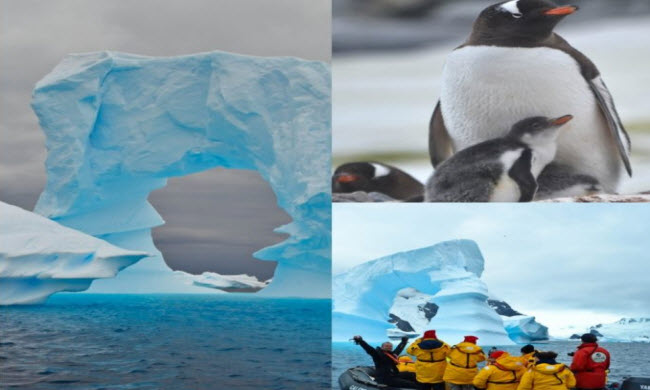Antarctica, the fifth largest continent by area, follows Asia, Africa, North America, and South America. It covers approximately 2.7% of Earth’s total surface area, making it 1.3 times larger than Europe. Positioned at Earth’s southernmost point, Antarctica encompasses the South Pole and extends largely south of the Antarctic Circle. Surrounded by the Southern Ocean, around 98% of the continent is covered by ice, with an average thickness of at least 1.6 kilometers. Antarctica is the coldest, driest, and windiest continent, boasting the highest average elevation of all continents. Due to its minimal precipitation, except along the coasts, its interior is technically the largest desert in the world. The continent has no permanent residents; it has never had indigenous inhabitants, only plants and animals adapted to the cold, such as penguins, fur seals, and various types of algae. During the summer months, about 5,000 people work at research stations, but this number drops to around 1,000 in winter. Currently, 30 countries govern its territory, all parties to the Antarctic Treaty, which prohibits military activities, mining, nuclear explosions, and nuclear waste disposal on the continent.
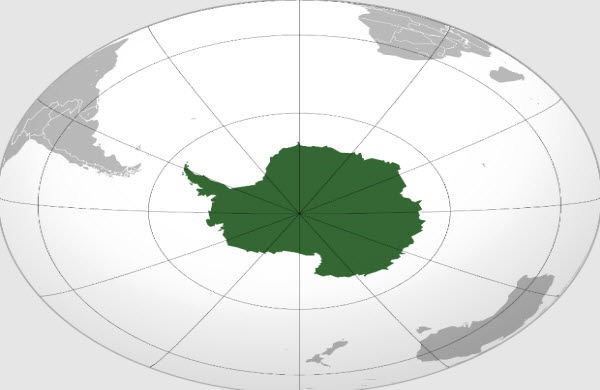
Antarctica is also known as “Antarctica,” derived from the Greek word “Antarktikos,” meaning “opposite to the Arctic.” Despite ancient myths and speculations about southern lands, the first confirmed sighting of the continent occurred in 1820 by a Russian expedition led by Mikhail Lazarev and Fabian Gottlieb von Bellingshausen. However, the continent remained largely neglected throughout the 19th century due to its harsh environment, lack of resources, and isolated location.
Historical Overview of Antarctica
The belief in the existence of “Terra Australis,” a vast southern landmass intended to balance the northern lands of Europe, Asia, and North Africa, dates back to Ptolemy (1st century AD). This idea aimed to maintain the symmetry of the known world’s landmasses. Maps often depicted a large southern landmass until the late 17th century when explorers discovered that South America and Oceania were not part of the mythical Antarctica. Geographers assumed the continent was much larger than the mapped areas. European maps continued to show this hypothetical land until Captain James Cook crossed the Antarctic Circle in January 1773 and again in 1774. The first confirmed sighting of Antarctic lands occurred in 1820, credited to the captains and crews of three ships:
- Fabian Gottlieb von Bellingshausen (Russian Imperial Navy captain)
- Edward Bransfield (British Royal Navy captain)
- Nathaniel Palmer (American seal hunter)
Reports indicate that Bellingshausen first sighted Antarctica on January 27, 1820, three days before Bransfield and ten months before Palmer. Bellingshausen’s expedition, consisting of two ships led by him and Mikhail Petrovich, reached a point 32 km from the Antarctic mainland and observed the ice fields. The first documented landing on the mainland was by American seal hunter John Davis on February 7, 1821, in the western part of the continent, though some historians question this claim.
In December 1839, as part of the United States Exploring Expedition (1838-1842), the U.S. Navy, with 433 men and six ships, sailed from Sydney, Australia, to the Antarctic region, then known as the Antarctic Ocean. They reported discovering “Antarctica west of the Balleny Islands,” which was later named “Wilkes Land” after the expedition’s leader, Lieutenant Charles Wilkes. This name remains in use today. In 1841, explorer James Clark Ross navigated through what is now known as Ross Sea and discovered Ross Island (both named after him), and sailed along a massive ice shelf later named the Ross Ice Shelf. The “Mercator Cooper” landed in East Antarctica on January 26, 1853.

In the 20th century, during an expedition led by Ernest Shackleton in 1907, a team led by T.W. Edgeworth David became the first to climb Mount Erebus and reach the South Magnetic Pole. Shackleton and three other members of his team crossed the Ross Ice Shelf in December 1908 and February 1909, becoming the first to traverse a range of mountains across Antarctica (via the Beardmore Glacier) and the first to set foot on the Antarctic Plateau. In December 1911, Norwegian polar explorer Roald Amundsen’s team became the first to reach the geographic South Pole, followed by Robert Falcon Scott’s expedition a month later. Richard Evelyn Byrd conducted several flights over the South Pole in the 1930s and 1940s, performing extensive geological and biological research and crossing the continent. However, no one reached the South Pole again until October 31, 1956, when an American naval group led by Admiral George Dufek successfully landed there by aircraft.
Geography of Antarctica
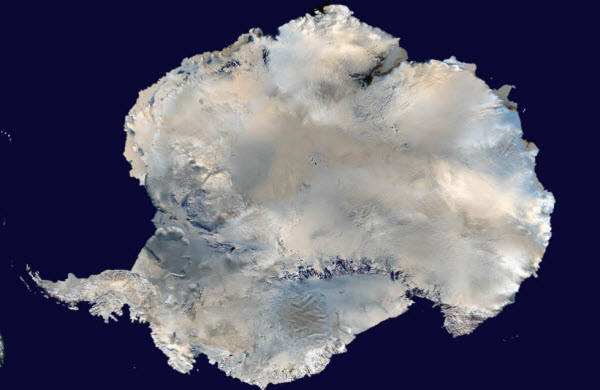
Antarctica is asymmetrically centered around the South Pole and extends largely south of the Antarctic Circle, surrounded by the Southern Ocean, which includes the South Pacific, Atlantic, and Indian Oceans. Covering more than 14 million square kilometers, it has a coastline of 17,968 km, predominantly characterized by ice formations. The continent is divided into two by the Transantarctic Mountains, with nearly 98% of its land covered by an ice sheet averaging at least 1.6 kilometers in thickness. Antarctica holds about 90% of the world’s ice and approximately 70% of its fresh water. If all this ice melted, sea levels would rise by around 61 meters, though most of the continent’s interior experiences very low precipitation.
The highest peak in Antarctica is Mount Vinson, reaching 4,892 meters in the Ellsworth Mountains. Although the continent is home to several volcanoes, Mount Erebus is the only one known for its activity. Another notable volcano, “Deception Island,” gained fame for its massive eruption in 1970, with frequent smaller eruptions since, and recent observations have noted lava flows. Antarctica also hosts over 70 lakes lying thousands of meters beneath the continental ice sheet, including Lake Vostok, discovered beneath the Russian Vostok Station in 1996. It is the largest subglacial lake, comparable in size to Lake Ontario in Canada. There is evidence suggesting that Lake Vostok may contain microbial life.
Climate of Antarctica
Antarctica’s temperatures range from -80°C to -90°C in the interior during winter, with summer highs reaching between 5°C and 15°C near the coast. The eastern part of the continent is colder than the west due to its elevation. Weather fronts rarely penetrate far into the continent, leaving the interior cold and dry. Although the central region receives minimal precipitation, the ice persists for long periods. Heavy snowfall is common in the coastal areas, and strong katabatic winds often blow off the Antarctic Plateau with storm-force strength, though inland wind speeds are generally moderate.
Antarctica is colder than the Arctic for two reasons: a significant portion of the continent is over 3 kilometers above sea level, leading to lower temperatures with altitude, and the Arctic Ocean, covered by sea ice, transmits relative warmth across the ice sheet. The long periods of continuous darkness or sunlight, due to its latitude, create unfamiliar climates in most parts of the continent.
The harsh climate of Antarctica does not support extensive plant life. The combination of freezing temperatures, poor soil quality, low humidity, and limited sunlight restricts plant growth, which is generally confined to algae and occurs mainly during the summer for only a few weeks. The continent supports a variety of marine animals that rely directly or indirectly on phytoplankton, including penguins, blue whales, orcas, and fur seals, which were heavily hunted in the 18th and 19th centuries by American and British hunters for their fur. Several regulations now limit this practice and prevent the introduction of non-native plants and animals.
Population
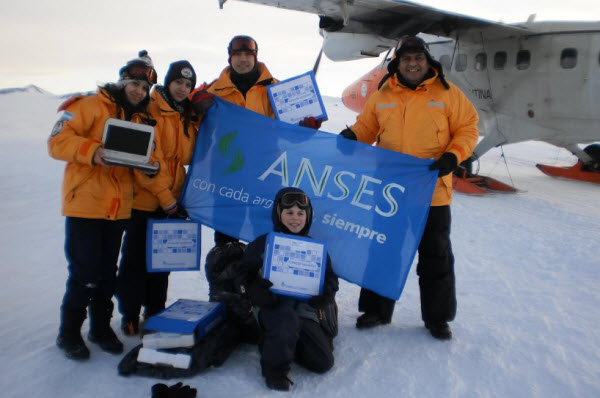
Antarctica has no permanent residents, but several governments maintain permanent research stations across the continent. The number of people conducting and supporting scientific research and other activities on the continent and nearby islands ranges from about 5,000 in the summer to about 1,000 in the winter, with many stations operating year-round.
The first semi-permanent inhabitants of areas close to Antarctica were British and American seal hunters, who spent mostly a year or more on South Georgia Island starting in 1786. During the whaling era, which lasted until 1966, the island’s population varied from over 1,000 in summer (up to 2,000 in some years) to around 200 in winter. Most whalers were Norwegian, with an increasing number of British, and often the managers and senior officers lived with their families.
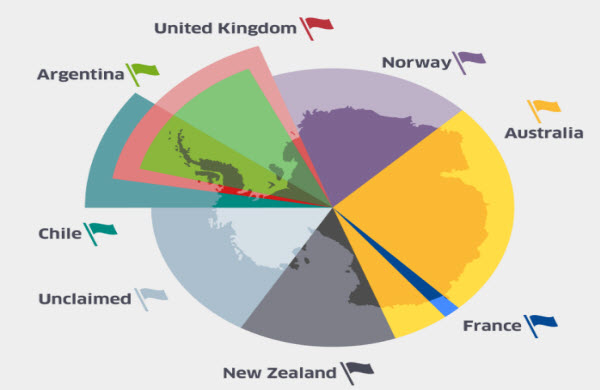
On October 8, 1913, the first child was born in the Antarctic region, a Norwegian girl named Solveig Gunbjorg Jacobsen, recorded by a British magistrate stationed in South Georgia. She was the daughter of Fridtjof Jacobsen, assistant manager of a whaling station, and Clara Ollet Jacobsen, who arrived on the island in 1904. Two of their children were also born there. Emilio Marcos Des Palma, the first child born on the Antarctic continent, was born at the Esperanza Base in 1978 after his parents were sent there with seven other families by the Argentine government to determine if family life was feasible in the continent. Many research stations now host families with children who attend school at the stations.
